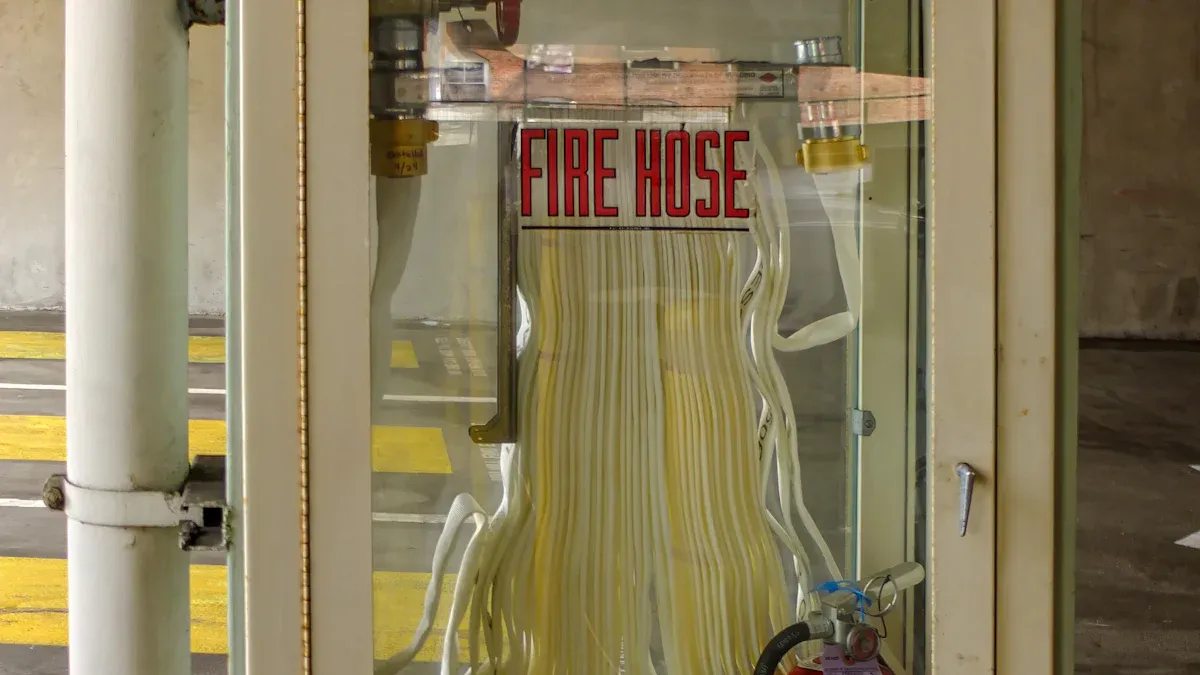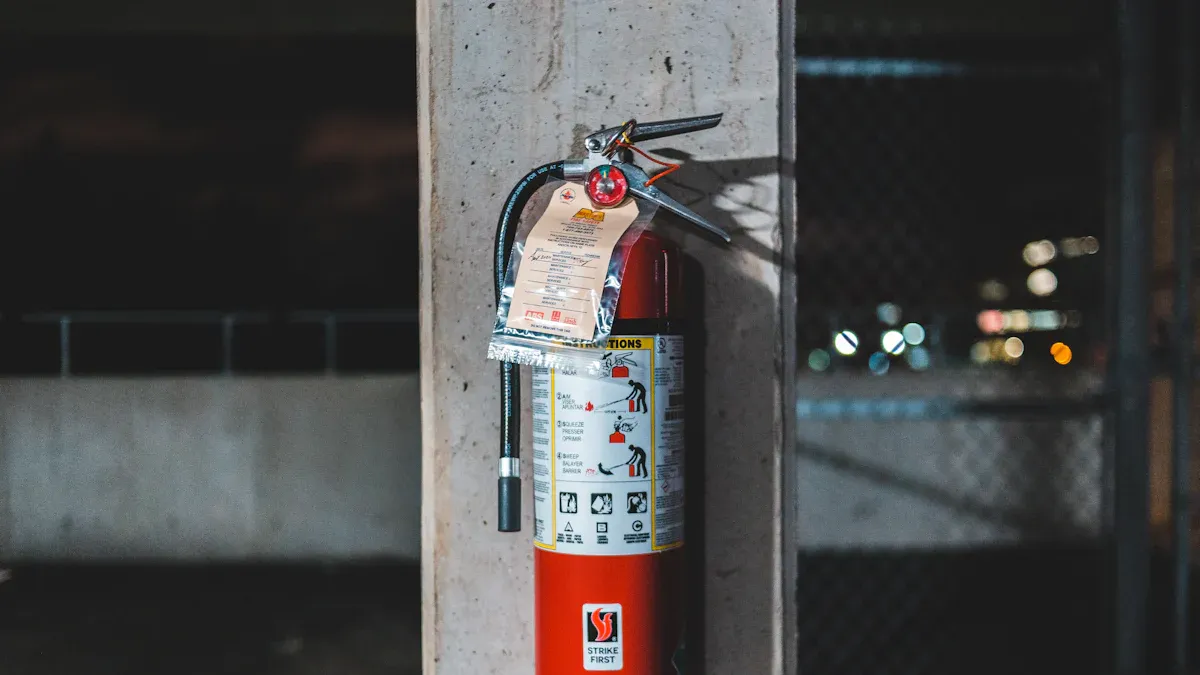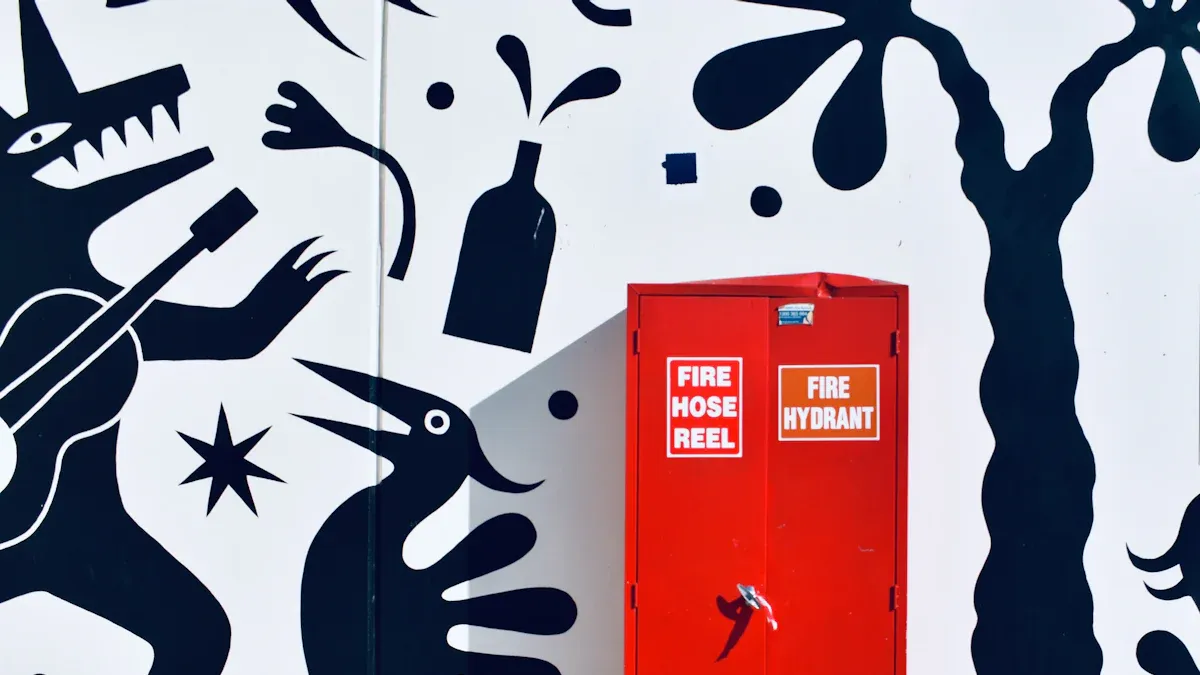
A Landing Valve With Cabinet is a type of fire safety equipment. This device holds a valve that connects to a water supply and sits inside a protective cabinet. Firefighters use the fire hose valve cabinet to get water quickly during emergencies. Fire Hydrant Landing Valves help them control water flow and keep the equipment safe from damage or tampering. The cabinet makes sure the valve stays clean and easy to reach.
Key Takeaways
- A Landing Valve With Cabinet helps firefighters get water quickly and safely during fires by protecting and organizing the valve and hose.
- The cabinet keeps the valve clean, secure, and easy to find, which speeds up emergency response and prevents damage or tampering.
- Building codes require these cabinets to ensure fire safety equipment is accessible, protected, and properly placed in visible locations.
- Regular inspections and maintenance keep the valve and cabinet in good condition, ensuring they work well when needed most.
- The cabinet design sets landing valves apart from outdoor hydrants by offering extra protection and better organization inside buildings.
How a Landing Valve With Cabinet Functions

Key Components and Features
A Landing Valve With Cabinet contains several important parts. Each part helps the system work well during a fire emergency. The main components include:
- Landing Valve: This valve connects to the building’s water supply. It allows firefighters to attach hoses quickly.
- Protective Cabinet: The cabinet keeps the valve safe from dust, dirt, and damage. It also prevents people from tampering with the equipment.
- Door with Lock or Latch: The door opens easily but stays secure when not in use. Some cabinets have a glass panel for quick access.
- Signage and Labels: Clear signs help firefighters find the Landing Valve With Cabinet fast.
- Mounting Brackets: These brackets hold the valve and hose in place inside the cabinet.
Tip: A Landing Valve With Cabinet often includes a small instruction label. This label shows how to use the valve in an emergency.
The table below shows the main features and their purposes:
| Component | Purpose |
|---|---|
| Landing Valve | Controls water flow for firefighting |
| Cabinet | Protects and secures the valve |
| Door/Lock | Allows easy but safe access |
| Signage | Helps with quick identification |
| Mounting Brackets | Keeps equipment organized |
Water Flow Control and Operation
The Landing Valve With Cabinet gives firefighters a way to control water flow during a fire. When they arrive, they open the cabinet and connect a fire hose to the valve. The valve has a wheel or lever. Firefighters turn this to start or stop the water.
The valve connects directly to the building’s water supply. This setup means water is always ready for use. Firefighters can adjust the flow to match the size of the fire. They can open the valve fully for large fires or use less water for smaller fires.
A Landing Valve With Cabinet makes sure the water stays clean and the valve works well. The cabinet protects the valve from weather and damage. This protection helps the system work every time it is needed.
Note: Regular checks help keep the Landing Valve With Cabinet in good condition. Building staff should inspect the cabinet and valve often.
Installation of Landing Valve With Cabinet in Buildings
Typical Locations and Placement
Building designers place Landing Valve With Cabinet units in areas where firefighters can reach them quickly. These locations often include:
- Stairwells on each floor
- Hallways near exits
- Lobbies or main entrances
- Parking garages
- Industrial zones inside factories
Fire safety codes guide the placement of these cabinets. The goal is to make sure firefighters do not waste time searching for water sources. Cabinets usually sit at a height that allows easy access. Some buildings use wall-mounted cabinets, while others use recessed models that fit inside the wall. This setup keeps walkways clear and prevents accidents.
Tip: Placing the cabinet in visible spots helps both building staff and emergency teams find it fast during a fire.
Reasons for Using a Cabinet
A cabinet gives extra protection to the landing valve. It shields the valve from dust, dirt, and accidental bumps. Cabinets also stop people from tampering with the equipment. In busy buildings, this protection keeps the valve in good working order.
The cabinet also helps organize the fire safety gear. It holds the valve, hose, and sometimes a nozzle in one place. This setup saves time during emergencies. Firefighters know exactly where to find everything they need.
A Landing Valve With Cabinet also helps meet fire safety rules. Many building codes require valves to stay protected and easy to reach. Cabinets help owners follow these rules and keep people safe.
Cabinets do more than protect equipment—they help save lives by making fire response faster and safer.
Landing Valve With Cabinet in Emergency Fire-Fighting

Firefighter Access and Use
Firefighters need quick and reliable tools when they arrive at a fire. The Landing Valve With Cabinet gives them fast access to water. They find the cabinet in a visible spot, open the door, and see the valve ready for use. The cabinet often holds a hose and nozzle, so firefighters do not waste time searching for equipment.
To use the system, a firefighter connects the hose to the valve. The valve opens with a simple turn of a wheel or lever. Water flows out right away. This setup helps firefighters start fighting the fire in seconds. The cabinet design keeps everything organized and easy to reach.
Tip: Firefighters train to use these cabinets quickly. Practice helps them save time during real emergencies.
Role in Fast and Safe Fire Response
A Landing Valve With Cabinet plays a key role in fire safety. It helps firefighters respond faster and safer. The cabinet protects the valve from damage, so it always works when needed. Firefighters trust that the water supply will be clean and strong.
The system also keeps the area around the valve clear. Cabinets prevent clutter and make sure nothing blocks the equipment. This design reduces the risk of accidents during a fire emergency.
| Benefit | How It Helps Firefighters |
|---|---|
| Fast access | Saves time in emergencies |
| Protected equipment | Ensures reliable operation |
| Organized layout | Reduces confusion and delays |
Firefighters depend on these cabinets for a quick and safe response. The Landing Valve With Cabinet supports their work and helps protect lives and property.
Benefits of Landing Valve With Cabinet for Building Safety
Enhanced Accessibility and Protection
A Landing Valve With Cabinet gives firefighters and building staff quick access to water during emergencies. The cabinet keeps the valve in a visible and easy-to-reach spot. This setup helps people find the equipment fast, even in smoke or low light. Cabinets also protect the valve from dust, dirt, and accidental damage. When the valve stays clean and safe, it works well every time someone needs it.
The cabinet design also prevents tampering. Only trained people can open the cabinet and use the valve. This feature keeps the equipment ready for real emergencies. In busy buildings, cabinets stop people from moving or damaging the valve by mistake. The organized layout inside the cabinet means hoses and nozzles stay in place and do not get lost.
Note: Easy access and strong protection help save lives and property during a fire.
Compliance with Fire Safety Standards
Many building codes require fire safety equipment to meet strict rules. A Landing Valve With Cabinet helps building owners follow these standards. The cabinet keeps the valve in the right place and at the correct height. Clear labels and signs on the cabinet make it easy for inspectors and firefighters to find the equipment.
The cabinet also helps with regular inspections. Staff can check the valve and hose without moving other items. This setup makes it simple to spot problems and fix them before an emergency happens.
| Standard Requirement | How the Cabinet Helps |
|---|---|
| Proper placement | Cabinet mounts at correct spot |
| Equipment protection | Cabinet shields from damage |
| Clear identification | Labels and signs on cabinet |
Meeting fire safety standards keeps people safe and helps avoid fines or legal trouble. Building owners trust the Landing Valve With Cabinet to support their fire protection plans.
Differences Between Landing Valve With Cabinet and Other Valves
Comparison with Hydrant Valves
Hydrant valves and landing valves both help supply water during a fire emergency. However, they serve different roles and have unique features. Hydrant valves usually sit outside a building. Firefighters connect hoses to these valves to get water from the main supply. Hydrant valves often stand alone and do not have extra protection.
Landing valves, on the other hand, are found inside buildings. They connect to the building’s internal water system. Firefighters use these valves when fighting fires on upper floors or in large indoor spaces. The cabinet around a landing valve keeps it safe from dust, dirt, and damage. Hydrant valves do not have this extra layer of protection.
The table below shows some key differences:
| Feature | Hydrant Valve | Landing Valve (with Cabinet) |
|---|---|---|
| Location | Outside | Inside |
| Protection | None | Cabinet |
| Water Source | Main supply | Internal system |
| Accessibility | Exposed | Secured and organized |
Firefighters choose the right valve based on the fire’s location and the building’s design.
Unique Advantages of Cabinet Design
The cabinet design offers several benefits that set it apart from other valves. First, the cabinet protects the valve from accidental bumps and tampering. This protection helps keep the valve in good working order. Second, the cabinet keeps the area around the valve clean and organized. Fire hoses and nozzles stay in place and do not get lost.
The cabinet also makes it easier for firefighters to find the valve during an emergency. Clear labels and signs on the cabinet help them act quickly. Cabinets often include locks or latches, which prevent unauthorized use. This feature ensures that only trained people can access the equipment.
A cabinet can also help a building meet fire safety codes. Inspectors can check the valve and hose without moving other items. This setup saves time and helps keep everyone safe.
Cabinets do more than just protect equipment—they help save lives by making fire response faster and more reliable.
Maintenance and Inspection of Landing Valve With Cabinet
Routine Checks and Best Practices
Regular maintenance keeps fire safety equipment ready for emergencies. Building staff should check the cabinet and valve often. They look for signs of damage, dirt, or leaks. Staff also make sure the cabinet door opens easily and the lock works.
A good inspection routine includes these steps:
- Open the cabinet and check the valve for rust or corrosion.
- Turn the valve wheel or lever to make sure it moves smoothly.
- Inspect the hose and nozzle for cracks or wear.
- Clean the inside of the cabinet to remove dust and debris.
- Confirm that labels and signs are clear and easy to read.
Tip: Staff should record each inspection in a logbook. This record helps track when checks happen and what repairs are needed.
A table can help organize the inspection tasks:
| Task | How Often | What to Look For |
|---|---|---|
| Check valve and hose | Monthly | Rust, leaks, cracks |
| Clean cabinet | Monthly | Dust, dirt |
| Test door and lock | Monthly | Easy to open, secure |
| Review signage | Every 6 months | Faded or missing labels |
Addressing Common Issues
Sometimes, problems appear during inspections. Staff may find a stuck valve or a leaking hose. They should fix these issues right away. If the valve does not turn, they can apply lubricant or call a technician. For leaks, replacing the hose or tightening connections often solves the problem.
Other common issues include missing labels or a broken cabinet door. Staff should replace labels and repair doors as soon as possible. Quick action keeps the equipment ready for use.
Note: Regular checks and fast repairs help ensure the fire safety system works when needed.
A Landing Valve With Cabinet gives buildings a strong tool for fire protection. This equipment helps firefighters get water quickly and safely. It keeps the valve clean and ready for use. Building owners improve safety and emergency response by choosing the right cabinet and keeping it in good condition. Regular checks and correct installation make sure the system works when needed most.
Regular maintenance protects lives and property during a fire emergency.
FAQ
What is the main difference between a landing valve and a fire hydrant?
A landing valve sits inside a building, while a fire hydrant stays outside. Firefighters use landing valves for indoor fires. Hydrants connect to the main water supply outdoors.
How often should building staff inspect a landing valve with cabinet?
Staff should inspect the cabinet and valve at least once a month. Regular checks help keep the equipment clean, working, and ready for emergencies.
Can anyone open a landing valve cabinet during an emergency?
Only trained people, such as firefighters or building staff, should open the cabinet. Cabinets often have locks or seals to prevent tampering.
Why do fire safety codes require cabinets for landing valves?
Fire safety codes require cabinets to protect the valve from damage and dirt. Cabinets also help keep the equipment organized and easy to find during a fire.
What should staff do if they find a problem during inspection?
Staff should fix any issues right away. If they cannot repair the problem, they should call a qualified technician. Quick action keeps the fire safety system ready.
Post time: Jun-19-2025

